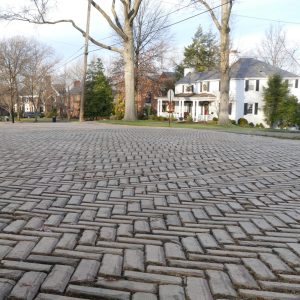historic preservation details: roofs and windows
This post is part three of a five-part series by Yvette Yescas. Navigate between them below.
Click here to see the map of Mt. Lebanon’s historic districts.
 |
 |
 |
 |
 |
This blog continues a series on the Secretary of Interior’s Standards for Rehabilitation and Guidelines for Rehabilitating Historic (Secretary’s ) and looks at two important character-defining features of historic homes: roofs and windows.
It will outline the basic standards and guidelines and end with links to much more detailed resources.
ROOFS:
Identify, retain and preserve sound historic material:
- slate
- clay tile
- wood
- architectural metal

Protect and maintain your historic roof against:
- wind damage
- moisture penetration
When replacement is necessary, it should convey the same visual appearance, especially if the original is available to model. If the original is unavailable, consider other documentation about the neighborhood. (In Mt. Lebanon, we are fortunate to have a great resource: Living with Styles by John Conti.) 
New roof design should be compatible to the original and neighboring homes in:
- size
- scale
- material
- color

Historic character can be preserved without exact replication, but changes should be inconspicuous from the public right-of-way and without damage or obstruction of character-defining features, according to the Secretary’s Standards.
http://www.nps.gov/tps/standards/rehabilitation/rehab/roofs01.htm
WINDOWS:
The section of the standards on windows is no doubt the result of extensive, impassioned discussion on this feature within the historic preservation community. It is lengthier than other sections and includes a list of actions you should not take, but first, it outlines steps you can take to rehabilitate your historic windows.
Identify, retain and preserve sound historic wood and architectural metals that comprise:
- window frame
- sash
- muntins
- surrounds

First steps:
- conduct an in-depth assessment of the condition of existing windows
- explore all your upgrading methods
- examine the potential for repair instead of replacement
- determine possible replacement options
Appropriate surface treatments:
- cleaning
- rust removal
- limited paint removal
- re-application of protective coating systems
- re-caulking
- replacing or installing weatherstripping
Window frames and sash can be repaired by patching, splicing, consolidating or otherwise reinforcing existing frames and sash; they can be replaced with in-kind or compatible substitute material when parts are either extensively deteriorated or missing. When adding windows, err on the side of caution by putting them to the rear or non-character-defining elevations of your home. It’s a useful rule of thumb to give priority in preservation to what’s seen from the public right-of-way.
Ultimately, the Secretary’s Standards really give the impression that what you do to your windows is not nearly as important as what you don’t do.
I feel obliged to give you the “Do Not” list:
Do Not
- change the number, location, size or glazing pattern of windows by cutting new openings, blocking-in windows, and installing replacement sash that fail to fit the historic window opening
- use substitute material for the replacement part that does not convey the visual appearance of the surviving parts of the window or that is physically or chemically incompatible
- remove a character-defining window that is unrepairable by blocking it in or replacing it with a new window that does not convey the same visual appearance
http://www.nps.gov/tps/standards/rehabilitation/rehab/windows01.htm
The Department of the Interior and National Park Service do not end their guidance with these basics. You can find much more specific information among their online resources. All of their technical service briefs are available here, or you can jump to these pages now:
The Repair, Replacement and Maintenance of Historic Slate Roofs
The Preservation and Repair of Historic Clay Tile Roofs
The Preservation and Repair of Historic Stained and Leaded Glass
My upcoming blog focuses on Materials, and as promised, will feature Jen Curran’s imagery of Contributing Properties to the National Register-nominated historic district. Remember, though, these blogs are about voluntary standards and impose no restrictions on home owners, not even those in the nominated historic district. Please keep reading!
 |
 |
 |
 |
 |





